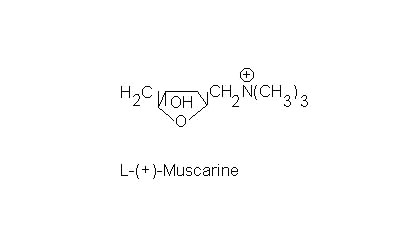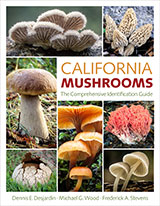Toxic Fungi of Western North America
The muscarine group toxins
Muscarine, although found in 1869, did not have its simple amine structure identified until 1954 by Eugster and Waser—a span of 85 years. (146) Three years later the compound was synthesized and it was determined to be an oxoheterocyclic quarternary salt, 2-methy-3-hydroxy-5-trimethyl-ammoniummethyltetrahydrofuran chloride. (147) Fortunately, the ring structure is simpler to inspect than it is to visualize from its long name.

Fig. 9. Muscarine
This toxin produces muscarine poisoning by strongly attaching to muscarinic acetylcholine receptors in the parasympathetic nerves and initiating an acetylcholine effect on organs supplied by these nerves (part of the non-voluntary nervous system). The enzyme acetylcholinesterase, which breaks down acetylcholine, is not effective against muscarine.
Muscarine toxicity produces SLUDGE, the acronym for Salivation, Lacrimation (formation of tears), Urination, Defecation, Gastrointestinal upset and pulmonary Edema. Pulmonary edema (fluid in the lung spaces) occurs only with very severe poisonings.

